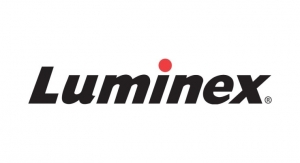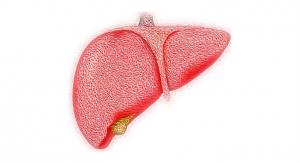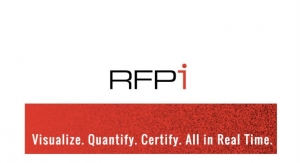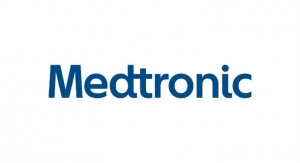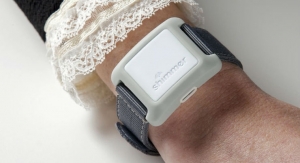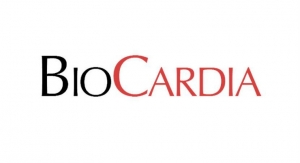Jeffrey J. Kimbell and Caroline P. Tucker, Jeffrey J. Kimbell & Associates Inc.04.03.19
The new technology add-on payment (NTAP) program is a payment system designed by Congress to encourage the uptake of new and costly medical technologies1 in the hospital setting under the Hospital Inpatient Prospective Payment System (IPPS) in Medicare Part A. The IPPS, implemented in 1983, created a fixed, prospective payment for hospitalizations based on the average resources needed to treat a beneficiary with a particular diagnosis, or Medicare Severity-Diagnosis Related Group (MS-DRG). While the Centers for Medicare and Medicaid Services (CMS) revises MS-DRG rates annually, the agency bases these payments on Medicare claims data accrued over a two to three-year period. The result is a “payment lag,” or discrepancy between the current beneficiary profile and estimated beneficiary profile. The NTAP program, therefore, was created out of a growing recognition that the IPPS was unable to provide timely access and adequate payment to new, clinically significant technologies for Medicare beneficiaries.
NTAP, signed into law in 2001, was intended to apply to new medical technology and drugs with demonstrated benefits over existing therapies for two to three years if the payment for the service or procedure related to the technology was inadequate, as well as classify that technology within a new or existing DRG with reimbursement that adequately reflects the cost of the procedure and technology at the conclusion of NTAP.2 CMS used its discretionary authority to issue regulations to determine a process for issuing add-on payments for new medical services and technology. For a new technology to be eligible for an NTAP, CMS requires three specific criteria be met, as mandated in the statute: the medical service or technology must be new; it must be costly such that the DRG rate otherwise applicable to discharges involving the medical service or technology is determined to be inadequate; and it must demonstrate a substantial clinical improvement over existing services or technologies.3
If a device satisfies the three NTAP criteria, it is then eligible for an NTAP, where the payment rate is equal to the lesser of 1) 50 percent of the amount by which the total covered costs of the case exceed the MS-DRG payment, or 2) 50 percent of the costs of the new technology.4 As the cost of a new technology is reflected in subsequent recalibrations of the MS-DRG weights, the NTAP for such a technology is discontinued.
Concern #1: Lack of NTAP Approvals
As new technologies are rapidly being developed, tested, approved, and brought to market, NTAP applications and approvals have not kept pace with medical innovation. From 2012-2018, for example, only 26 medical device NTAP applications were submitted to CMS.5 This is compared to at least 250 medical devices that have either been cleared or approved by the U.S. Food and Drug Administration (FDA) during that same period.6
In addition to low application rates, CMS denies a large proportion of NTAP applications each year. Of the 26 medical device manufacturers that had applied for NTAPs between fiscal year (FY) 2012 and 2018, only 11 were approved—a 42 percent acceptance rate. This trend can also be observed throughout the program’s history: between 2001 and 2011, CMS had only approved about a third—16 of 46, or 35 percent—of applications for NTAP.7 The most cited reasons for rejection are failure to meet the “newness” criterion and the “substantial clinical improvement” criterion.
Concern #2: Payment Inadequacy
While NTAP is intended to create a more certain reimbursement mechanism for innovative technologies, the payment amount associated with the NTAP is inadequate. Consider, for example, a technology that costs $5,000 and the MS-DRG associated with that technology reimburses at a rate of $30,000. Three scenarios are plausible: if the total cost of a case is $10,000, CMS will provide no NTAP (as the cost of the case is less than the MS-DRG payment); if the cost of a case is $50,000, CMS will provide an NTAP of $2,500 (or the lesser of 50 percent of the cost of the technology, $2,500, or 50 percent of the excess cost of the case not covered under the MS-DRG, $10,000); if the cost of the case is $31,000, CMS will provide an NTAP of $500 (or the lesser of 50 percent of the cost of the technology, $2,500, or 50 percent of the excess cost of the case not covered under the MS-DRG, $500).4 The NTAP payment of 50 percent falls well below the 80 percent payment associated with Medicare outlier payments.8 The inadequacy of the payment rates can put significant strain on hospitals using the new devices—where at least 50 percent of the cost of the device will not be recouped—as well as companies investing in, developing, and selling these technologies.
In addition, NTAP payment rates are not comparable to similar payments made under other payment systems. Transitional pass-through payments are made under the Medicare Outpatient Prospective Payment System (OPPS) and function as an outpatient analog for NTAP—where a temporary payment is made for new devices while accurate cost data is collected to incorporate the cost of the device into the procedure. One of the most important aspects of the pass-through payment system, especially in the context of NTAP, is the payment amount for eligible devices, where new technologies are reimbursed at-cost during their pass-through payment period. One key difference between pass-through and NTAP is that pass-through is budget neutral, meaning it has built-in cost containment mechanisms, whereas NTAP is not budget neutral and changes to NTAP may result in substantial costs to Medicare.
Financial Impact of NTAP
Due to the limited number of NTAP approvals and the payments associated with them, NTAP has cost far less than the Congressional Budget Office (CBO) had originally projected, even without being budget neutral. When NTAP was originally enacted, CBO had projected 10-year costs of NTAP in the Medicare program to be $500 million. From 2002 to 2013, however, the NTAP program resulted in only $201.7 million in payments made by Medicare—40 percent of what CBO had predicted.9 Other analyses using data from the Medicare Provider Analysis and Review (MEDPAR) File, which contains information on all the Medicare beneficiaries using hospital inpatient services and expenditures for those services, has provided insight as to how NTAPs influence Medicare Part A spending. NTAPs, including both drug and device NTAPs in the MEDPAR analysis, were only applied to 0.02 percent of hospital discharges in FY 2013—with NTAP reimbursement at $14,491,792 compared to a total inpatient reimbursement amount of $127,729,044,215—and 0.03 percent in FY 2014—with NTAP reimbursement at $18,225,759 compared to a total inpatient reimbursement amount of $126,559,985,228.10
Potential Legislative Action
There are a few legislative proposals in Congress that seek to improve the NTAP program so patients have timely access to new and innovative medical technology. In the previous Congress, Rep. Tom Reed (R-NY) introduced H.R. 4679, the Ensuring Equal Access to Treatment Act. Reed’s bill would increase the NTAP payment amount from 50 percent to 75 percent; increase the NTAP add-on and data collection period from two or three years to five years to more adequately capture utilization; and establish a formal NTAP appeals process for manufacturers who were denied NTAP determinations. Additionally, in June 2018, Rep. Suzan DelBene (D-WA) introduced H.R. 5997, the Ensuring Patient Access to Critical Breakthrough Products Act. DelBene’s bill would increase the NTAP payment amount from 50 percent to 80 percent to align with the Medicare outlier payment rate; expand certain NTAP criteria definitions so more new technologies are eligible for and receive the add-on; and establish a formal appeals process for manufacturers denied an NTAP determination. While neither of these proposals is active legislation, they are examples of ways in which Congress can act to further medical innovation. DelBene is expected to release a new version of her bill for the current Congress this year, though the provisions contained in that bill are still uncertain.
Policy Suggestions Going Forward
As evidenced in this article, the current NTAP program has not been utilized or updated sufficiently. To preserve the original integrity of the NTAP program—to encourage the uptake of new, costly technologies by creating a temporary, but predictable, reimbursement for NTAP technologies until they can be incorporated into a traditional MS-DRG—Congress should consider increasing the add-on payment rate to incentivize appropriate uptake of new technologies. Congress, for example, could increase the payment rate to at least 75 percent or 80 percent, as evidenced in potential legislation, or up to 100 percent, as seen in the pass-through program. In addition, Congress and CMS should continue to work toward greater transparency when defining NTAP’s criteria, so that Medicare patients can benefit from promising, emerging technologies.
References/Endnotes
Jeffrey J. Kimbell, president and founder of Jeffrey J. Kimbell & Associates Inc., represents 35 clients in the life sciences community seeking legislative and policy remedies in Washington. Founded in 1998, the firm provides strategic solutions to hand-selected clients seeking creation, modification, or proper implementation of public law.
Caroline P. Tucker is a manager of health policy and reimbursement strategy at Jeffrey J. Kimbell & Associates Inc. She graduated with a B.A. in the history of science and medicine from the Johns Hopkins University and with an M.S. in health policy from the Milken Institute School of Public Health at the George Washington University.
NTAP, signed into law in 2001, was intended to apply to new medical technology and drugs with demonstrated benefits over existing therapies for two to three years if the payment for the service or procedure related to the technology was inadequate, as well as classify that technology within a new or existing DRG with reimbursement that adequately reflects the cost of the procedure and technology at the conclusion of NTAP.2 CMS used its discretionary authority to issue regulations to determine a process for issuing add-on payments for new medical services and technology. For a new technology to be eligible for an NTAP, CMS requires three specific criteria be met, as mandated in the statute: the medical service or technology must be new; it must be costly such that the DRG rate otherwise applicable to discharges involving the medical service or technology is determined to be inadequate; and it must demonstrate a substantial clinical improvement over existing services or technologies.3
If a device satisfies the three NTAP criteria, it is then eligible for an NTAP, where the payment rate is equal to the lesser of 1) 50 percent of the amount by which the total covered costs of the case exceed the MS-DRG payment, or 2) 50 percent of the costs of the new technology.4 As the cost of a new technology is reflected in subsequent recalibrations of the MS-DRG weights, the NTAP for such a technology is discontinued.
Concern #1: Lack of NTAP Approvals
As new technologies are rapidly being developed, tested, approved, and brought to market, NTAP applications and approvals have not kept pace with medical innovation. From 2012-2018, for example, only 26 medical device NTAP applications were submitted to CMS.5 This is compared to at least 250 medical devices that have either been cleared or approved by the U.S. Food and Drug Administration (FDA) during that same period.6
In addition to low application rates, CMS denies a large proportion of NTAP applications each year. Of the 26 medical device manufacturers that had applied for NTAPs between fiscal year (FY) 2012 and 2018, only 11 were approved—a 42 percent acceptance rate. This trend can also be observed throughout the program’s history: between 2001 and 2011, CMS had only approved about a third—16 of 46, or 35 percent—of applications for NTAP.7 The most cited reasons for rejection are failure to meet the “newness” criterion and the “substantial clinical improvement” criterion.
Concern #2: Payment Inadequacy
While NTAP is intended to create a more certain reimbursement mechanism for innovative technologies, the payment amount associated with the NTAP is inadequate. Consider, for example, a technology that costs $5,000 and the MS-DRG associated with that technology reimburses at a rate of $30,000. Three scenarios are plausible: if the total cost of a case is $10,000, CMS will provide no NTAP (as the cost of the case is less than the MS-DRG payment); if the cost of a case is $50,000, CMS will provide an NTAP of $2,500 (or the lesser of 50 percent of the cost of the technology, $2,500, or 50 percent of the excess cost of the case not covered under the MS-DRG, $10,000); if the cost of the case is $31,000, CMS will provide an NTAP of $500 (or the lesser of 50 percent of the cost of the technology, $2,500, or 50 percent of the excess cost of the case not covered under the MS-DRG, $500).4 The NTAP payment of 50 percent falls well below the 80 percent payment associated with Medicare outlier payments.8 The inadequacy of the payment rates can put significant strain on hospitals using the new devices—where at least 50 percent of the cost of the device will not be recouped—as well as companies investing in, developing, and selling these technologies.
In addition, NTAP payment rates are not comparable to similar payments made under other payment systems. Transitional pass-through payments are made under the Medicare Outpatient Prospective Payment System (OPPS) and function as an outpatient analog for NTAP—where a temporary payment is made for new devices while accurate cost data is collected to incorporate the cost of the device into the procedure. One of the most important aspects of the pass-through payment system, especially in the context of NTAP, is the payment amount for eligible devices, where new technologies are reimbursed at-cost during their pass-through payment period. One key difference between pass-through and NTAP is that pass-through is budget neutral, meaning it has built-in cost containment mechanisms, whereas NTAP is not budget neutral and changes to NTAP may result in substantial costs to Medicare.
Financial Impact of NTAP
Due to the limited number of NTAP approvals and the payments associated with them, NTAP has cost far less than the Congressional Budget Office (CBO) had originally projected, even without being budget neutral. When NTAP was originally enacted, CBO had projected 10-year costs of NTAP in the Medicare program to be $500 million. From 2002 to 2013, however, the NTAP program resulted in only $201.7 million in payments made by Medicare—40 percent of what CBO had predicted.9 Other analyses using data from the Medicare Provider Analysis and Review (MEDPAR) File, which contains information on all the Medicare beneficiaries using hospital inpatient services and expenditures for those services, has provided insight as to how NTAPs influence Medicare Part A spending. NTAPs, including both drug and device NTAPs in the MEDPAR analysis, were only applied to 0.02 percent of hospital discharges in FY 2013—with NTAP reimbursement at $14,491,792 compared to a total inpatient reimbursement amount of $127,729,044,215—and 0.03 percent in FY 2014—with NTAP reimbursement at $18,225,759 compared to a total inpatient reimbursement amount of $126,559,985,228.10
Potential Legislative Action
There are a few legislative proposals in Congress that seek to improve the NTAP program so patients have timely access to new and innovative medical technology. In the previous Congress, Rep. Tom Reed (R-NY) introduced H.R. 4679, the Ensuring Equal Access to Treatment Act. Reed’s bill would increase the NTAP payment amount from 50 percent to 75 percent; increase the NTAP add-on and data collection period from two or three years to five years to more adequately capture utilization; and establish a formal NTAP appeals process for manufacturers who were denied NTAP determinations. Additionally, in June 2018, Rep. Suzan DelBene (D-WA) introduced H.R. 5997, the Ensuring Patient Access to Critical Breakthrough Products Act. DelBene’s bill would increase the NTAP payment amount from 50 percent to 80 percent to align with the Medicare outlier payment rate; expand certain NTAP criteria definitions so more new technologies are eligible for and receive the add-on; and establish a formal appeals process for manufacturers denied an NTAP determination. While neither of these proposals is active legislation, they are examples of ways in which Congress can act to further medical innovation. DelBene is expected to release a new version of her bill for the current Congress this year, though the provisions contained in that bill are still uncertain.
Policy Suggestions Going Forward
As evidenced in this article, the current NTAP program has not been utilized or updated sufficiently. To preserve the original integrity of the NTAP program—to encourage the uptake of new, costly technologies by creating a temporary, but predictable, reimbursement for NTAP technologies until they can be incorporated into a traditional MS-DRG—Congress should consider increasing the add-on payment rate to incentivize appropriate uptake of new technologies. Congress, for example, could increase the payment rate to at least 75 percent or 80 percent, as evidenced in potential legislation, or up to 100 percent, as seen in the pass-through program. In addition, Congress and CMS should continue to work toward greater transparency when defining NTAP’s criteria, so that Medicare patients can benefit from promising, emerging technologies.
References/Endnotes
- While NTAPs are permitted for medical technologies (including medical devices), drugs, and biologicals, only medical technologies, and applicable policy concerns, are included in this article.
- Thomas WM. Medicare, Medicaid, and SCHIP Benefits Improvement and Protection Act of 2000. 2000; Sec. 533 (106th Congress, Second Session).
- § 42 CFR 412.87 (2001).
- Bockstedt L. The effect of Medicare’s new technology add-on payment. University of Minnesota (2010).
- This data, as well as the number of CMS acceptances, was taken from the FY 2012 through FY 2018 Medicare IPPS Proposed and Final Rules.
- FDA maintains an archive of cleared or approved medical devices on its website. Product approvals are listed per year, and each list contains a disclaimer that it may not include every new medical device that has been cleared or approved for sale in the United States. It is important to note that not all cleared or approved devices are used in inpatient procedures, as is a requirement to be eligible for NTAP, but this data is intended to show the low number of NTAP applications compared to available new devices on the market.
- Young K. Medicare Rejects Most Bids for New Technology Add-On Payment. Commonwealth Fund (2015).
- Congress created Medicare outlier payments to Medicare-participating hospitals in addition to the standard prospective payments for cases incurring extraordinarily high costs. To qualify for outlier payments, a case must have costs above a fixed-loss cost threshold amount (a dollar amount by which the costs of a case must exceed payments to qualify for outliers). Often, hospitals that use an NTAP technology seek out and receive outlier payments to supplement the costs not covered by the NTAP.
- Hernandez J, Machacz SF, Robinson JC. US Hospital Payment Adjustments For Innovative Technology Lag Behind Those In Germany, France, And Japan. Health Affairs (2006).
- Littmann N. CMS Reveals Rationale for NTAP Decisions in Rule Making. MedTech Intelligence (2015).
Jeffrey J. Kimbell, president and founder of Jeffrey J. Kimbell & Associates Inc., represents 35 clients in the life sciences community seeking legislative and policy remedies in Washington. Founded in 1998, the firm provides strategic solutions to hand-selected clients seeking creation, modification, or proper implementation of public law.
Caroline P. Tucker is a manager of health policy and reimbursement strategy at Jeffrey J. Kimbell & Associates Inc. She graduated with a B.A. in the history of science and medicine from the Johns Hopkins University and with an M.S. in health policy from the Milken Institute School of Public Health at the George Washington University.





